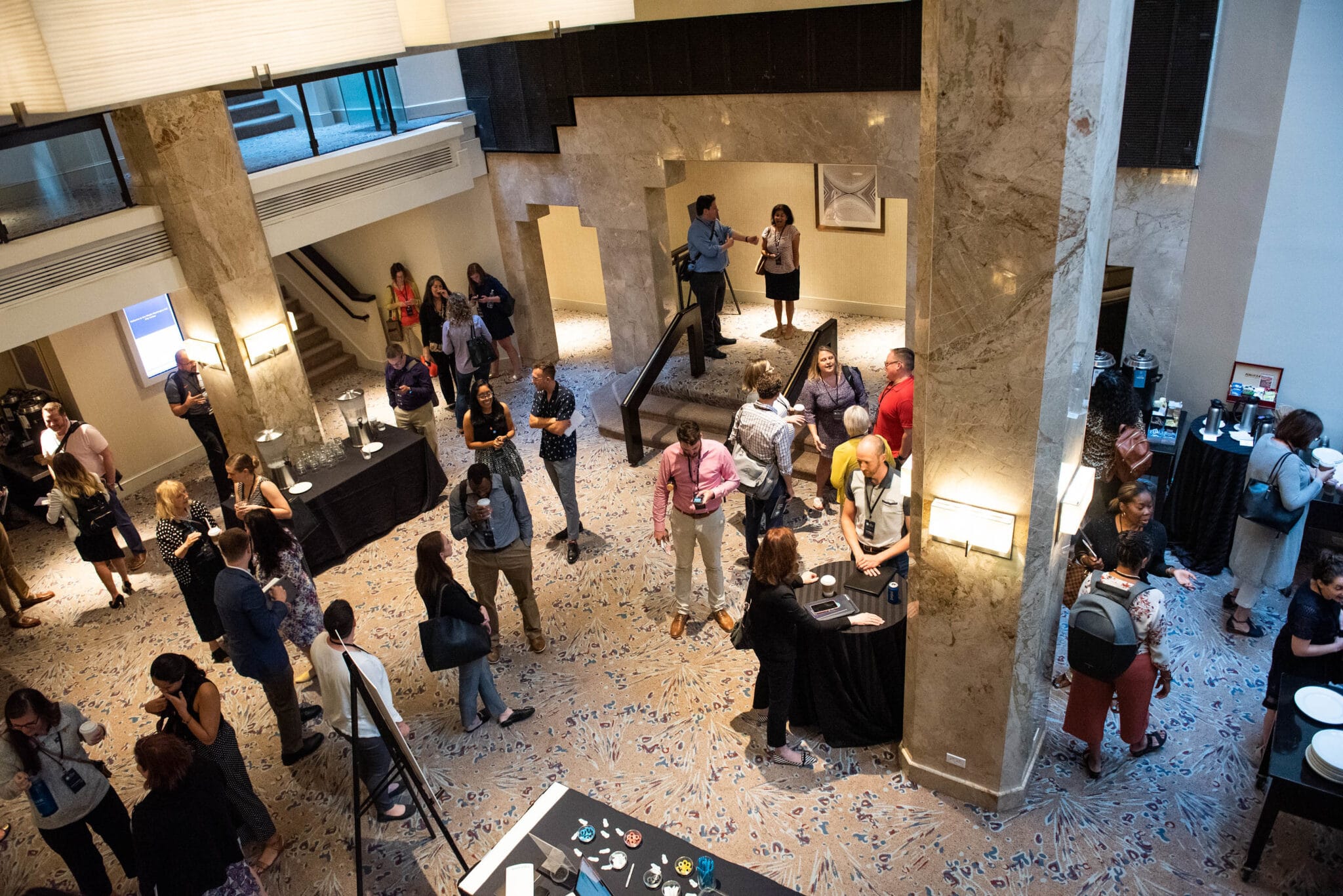This blog post continues our series, Scholar at Large, written by an academic who is now on the tenure track at Nevada State College.
Graduate programs are increasingly modernizing their professionalization toward a more inclusive humanities job market. This is definitely promising for upcoming and recent PhDs, even while many of these programs are still being taught by faculty who have little to no experience beyond their academic silos. At the same time, is this shift exacerbating a gap between generations of academics? What can current faculty do to incorporate more inclusive humanities work into their own practices, and enhance their abilities to speak to humanities work more broadly?
Recently, I was reminded of how conferences can provide scholars at any level, and with any title, the opportunity to “learn new tricks.” I presented at both the American Studies Association and the National Humanities Conference (a collaboration between the National Humanities Alliance and the Federation of State Humanities Councils), occurring concurrently in Honolulu. Both spaces were largely composed of professionals with the same credentials—scholars, academics, educators with advanced degrees. Yet I was struck by how distinct the conversations felt between these two communities.
This difference was very generative for me and reminded me of the work I did while exploring non-traditional academic careers:
- I was able to make the way I relay my research more inclusive (and thus generate better ideas from the conversations)
- I was forced to push the agility of my thinking and communication
- I broadened the way I approached building my networks in my field
I walked away from that week wanting to encourage current faculty and graduate students to approach conferencing more creatively than we tend to be trained to do. Creative conferencing is a great way to boost your knowledge of broader humanities work—and in turn to connect with humanities practitioners that will make your scholarship more robust (and have more sustaining impact). At the same time, you’ll be actively practicing the same skills that you want to instill in your students.
Creative conferencing helps us understand what being an “agile thinker” means in practice
At traditional academic conferences, there is often an assumed “starting position” of knowledge, of politics, of priorities. While that shared starting position is an important part of how knowledge is developed in a field, it can also perpetuate a field’s insularity. Bringing my work to two different kinds of conferences gave me access to more inclusive and challenging conversations, which in turn sharpened my ideas and the contributions I make to my field.
Though I presented the same core material at each conference, I had to think differently about how I framed my work. I was placing my work in conversation with different kinds of humanities practitioners (not just professors, but folks who work with communities and K-12 teachers, folks supporting initiatives like The Lemon Project), which encouraged me to draw new connections between others’ work and my own. I had to practice recognizing and making my work relevant for the different starting points, pressures, and stakes related to doing humanities work for each audience.
Creative conferencing helps us identify new modes of academic collaboration
Despite the fundamental overlap in the commitments and the backgrounds of the attendees of each conference, the conversations at each conference tended to remain siloed in either the theoretical or the pragmatic. I found this gap astounding; it seems that there should be no reason for it other than the ways that professors determine “academic work” to look and sound like something very particular. Purposefully going to conferences that enable us to meet with and collaborative with other humanities practitioners is a great way to close that gap. My own work will only improve the more I am able to think of its theoretical components and pragmatic applications as inextricably co-formative (as praxis).
Creative conferencing reveals networks we didn’t know we had (or even needed)
Conferencing across these venues also helped me think differently about how and who I was networking, and toward what ends. In one conference I’m connecting with folks who may expand my knowledge of my scholarly fields or pedagogical praxis, or who might potentially publish my book. In another I’m meeting and connecting with folks who, for instance, have expertise in public engagement work, who are starting institutes at their universities, or who are running initiatives related to equity in search committees. Working and dialoguing across these networks made me consider how I think about the different sectors of my own work—how they overlap and how I may be more creative in integrating them.
Now that I’ve started my job as a professor, I find that my academic and intellectual investments are shaped by pragmatic and institutional issues in a way that I simply was not cognizant of while attending a well-endowed and large university for graduate school. The more that I am able to understand my academic work in these terms, the more potential I have to both be good at my job and enrich the work of the humanities as a whole. The “alt ac” moves folks are talking about right now are not just for those coming up in the academy; they’re for all of us already in the tower, too.
Author bio: Dr. Molly Appel is an Assistant Professor of English at Nevada State College, where she teaches courses on composition and literature. Her work focuses largely on how literature works as a space of teaching and learning for human rights and social justice in the Americas. You find her on Twitter @mollyappel.
Interfolio’s Dossier enables scholars to collect, curate, polish and send out their materials at all stages throughout their academic professional path. Learn more about Dossier here.
Any opinions, findings, conclusions, or recommendations expressed in this material are those of the authors and do not necessarily reflect the view of Interfolio.
